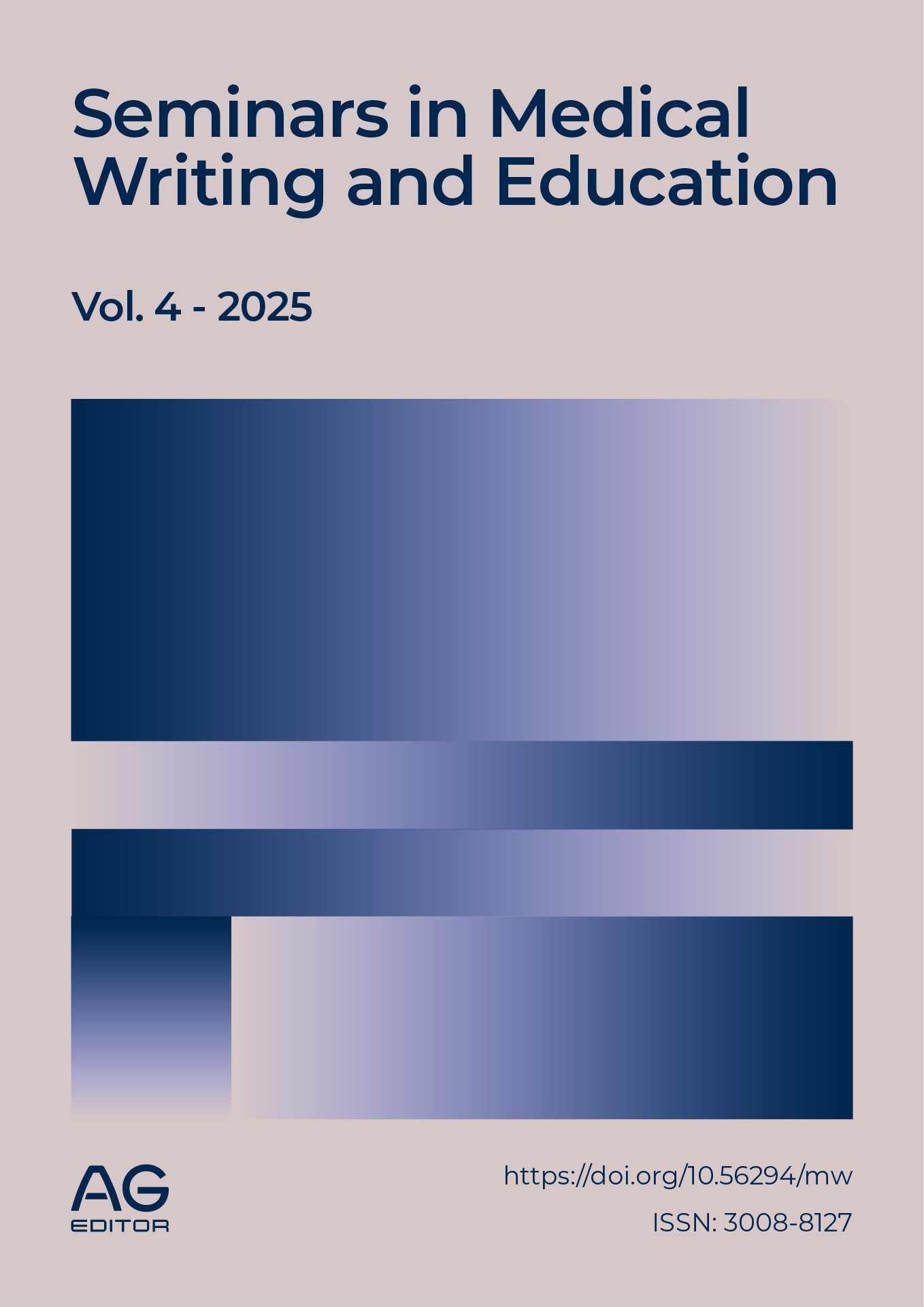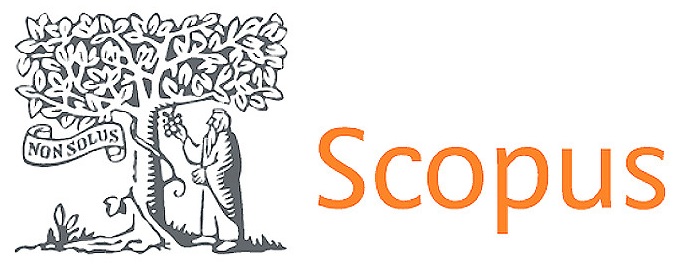Improving the practical competence of students through educational and market cooperation
DOI:
https://doi.org/10.56294/mw2025452Keywords:
practical skills, modern education, stakeholders, cooperation, practice, businessAbstract
Introduction: The relevance of cooperation between educational institutions and employers in developing students' practical competence has gained prominence, supported by theories such as the dual education model and competence-based approaches. However, a significant gap remains concerning the practical relevance of education provided to students.
Methods: This study adopted a qualitative methodology, employing the PRISMA approach for systematic literature review. Literature selection adhered to five strict inclusion criteria, limiting the review to English-language publications dated between 2019 and 2024. Ultimately, 36 sources were identified and analyzed.
Results:The analysis revealed a persistent problem of insufficient practical training relevance within modern education systems. Commonly utilized practices included implementing dual education models and engaging employers in curriculum development and teaching roles. Conversely, the establishment and functioning of career centers were less frequently highlighted in existing literature, despite evidence demonstrating their significant role in developing specific practical skills.
Conclusions:The findings underscored the critical importance of collaboration between educational institutions and employers for enhancing students' practical competence. Dual education and employer involvement emerged as prevalent practices, yet career centers require greater attention due to their potential for skill development. The study was limited by its exclusive focus on English-language sources and the stringent criteria inherent to the PRISMA methodology. Nevertheless, the research contributes valuable insights by systematically addressing the diverse mechanisms through which educational-employer cooperation positively impacts student competence development.
References
[1] Saraite-Sariene L, Alonso-Cañadas J, Galán-Valdivieso F, Caba-Pérez C. Non-financial information versus financial as a key to the stakeholder engagement: A higher education perspective. Sustainability [Internet]. 2019;12(1):331. Available from: http://dx.doi.org/10.3390/su12010331
[2] Bratianu C, Hadad S, Bejinaru R. Paradigm shift in business education: A competence-based approach. Sustainability [Internet]. 2020;12(4):1348. Available from: http://dx.doi.org/10.3390/su12041348
[3] Redko K, Riznyk D, Nikolaiev S, Yatsenko O, Shuplat O. The role of investment in creating a sustainable financial future: Strategies and tools. Futurity Economics & Law. 2024;4(3):20–33. Available from: https://doi.org/10.57125/FEL.2024.09.25.02
[4] Zhuravlova Y, Kichuk Y, Yakovenko O, Miziuk V, Yashchuk S, Zhuravska N. Innovations in education system: Management, financial regulation and influence on the pedagogical process. J Curric Teach [Internet]. 2022;11(1):163. Available from: http://dx.doi.org/10.5430/jct.v11n1p163
[5] Njeri SN, Smith JA, Ayaka PG. Involvement of stakeholders in establishment of infrastructure projects in schools. European Journal of Development Studies [Internet]. 2023;3(5):1–6. Available from: http://dx.doi.org/10.24018/ejdevelop.2023.3.5.305
[6] Chowdhury TI, Al Saeedi AS, Karim AM, Ahmed AR, Karim AM. Effective contemporary leadership in the tertiary education: Global stakeholders viewpoint. Int J Acad Res Bus Soc Sci [Internet]. 2024;14(1). Available from: http://dx.doi.org/10.6007/ijarbss/v14-i1/20466
[7] Bobrytska V, Luzik E, Reva T, Spitsin Y, Akmaldinova V. Involving stakeholders in shaping educational legislation and policy in Ukraine. Eur J Educ Res [Internet]. 2020;9(3):1189–200. Available from: http://dx.doi.org/10.12973/eu-jer.9.3.1189
[8] Borysiuk I, Haioshko OB, Korniichuk O, Tsekhmister Y, Demianchuk M. Alternative approaches to clinical practice in medical education during the covid-19 pandemic. J Curric Teach [Internet]. 2022;11(2):75. Available from: http://dx.doi.org/10.5430/jct.v11n2p75
[9] Cheng M, Adekola O, Albia J, Cai S. Employability in higher education: a review of key stakeholders' perspectives. Higher Education Evaluation and Development. 2022;16(1):16–31. Available from: https://doi.org/10.1108/HEED-03-2021-0025
[10] Jenkins E, Nardo JE, Salehi S. A systematic review of the 60 year literature: Effects of outreach programs in supporting historically marginalized and first-generation, low-income students in healthcare education. PLoS One [Internet]. 2022;17(12):e0278453. Available from: http://dx.doi.org/10.1371/journal.pone.0278453
[11] Halachev P. Integration of ChatGPT in e-learning systems: Comprehensive review. Periodicals of Engineering and Natural Sciences. 2024;12(1):169–182. Available from: http://pen.ius.edu.ba/index.php/pen/article/viewFile/3993/1362
[12] Kaldygozova S. Using mobile technologies in distance learning: A scoping review. E-Learning Innovations Journal. 2024;2(1):4–22. Available from: https://doi.org/10.57125/ELIJ.2024.03.25.01
[13] Prokopenko O. Digital contracts in renewable energy markets: Challenges and opportunities. Law, Business and Sustainability Herald. 2022;2(4):17–30. Available from: https://lbsherald.org/index.php/journal/article/view/48
[14] Hrechanyk N, Vasiuk O, Matsenko L, Folomieieva N, Koriakin O, Vyhovska S. Development of higher education of the XXI century in the world context in the face of global challenges. J Curric Teach [Internet]. 2023;12(5):96. Available from: http://dx.doi.org/10.5430/jct.v12n5p96
[15] Krap A, Bataiev S, Bobro N, Kozub V, Hlevatska N. Examination of digital advancements: Their influence on contemporary corporate management methods and approaches. Multidiscip Rev [Internet]. 2024;7:2024spe026. Available from: http://dx.doi.org/10.31893/multirev.2024spe026
[16] Langrafe T de F, Barakat SR, Stocker F, Boaventura JMG. A stakeholder theory approach to creating value in higher education institutions. Bottom Line [Internet]. 2020;33(4):297–313. Available from: http://dx.doi.org/10.1108/bl-03-2020-0021
[17] Crocco E, Giacosa E, Culasso F. Stakeholder engagement in higher education: State of the art and research agenda. IEEE Trans Eng Manage [Internet]. 2024;71:13457–68. Available from: http://dx.doi.org/10.1109/tem.2022.3218286
[18] Eagle L, McCarthy B, Hay R, Osmond A, Low D. Stakeholder perceptions of the importance and effects of sustainability education. In: Clean, Green and Responsible? Cham: Springer International Publishing; 2019. p. 65–86. https://doi.org/10.1007/978-3-030-21436-4_5
[19] Falqueto JMZ, Hoffmann VE, Gomes RC, Onoyama Mori SS. Strategic planning in higher education institutions: what are the stakeholders’ roles in the process? High Educ [Internet]. 2020;79(6):1039–56. Available from: http://dx.doi.org/10.1007/s10734-019-00455-8
[20] Shalatska HM, Zotova-Sadylo OY, Makarenko OY, Dzevytska LS. Implementation of E-assessment in higher education. In: Proceedings of the 16th International Conference on ICT in Education, Research and Industrial Applications. Integration, Harmonization and Knowledge Transfer. Volume II: Workshops. 2020;2732:1172–1186. Available from: https://ceur-ws.org/Vol-2732/20201172.pdf
[21] Pereira ET, Vilas-Boas M, Rebelo CFC. University curricula and employability: The stakeholders’ views for a future agenda. Ind High Educ [Internet]. 2020;34(5):321–9. Available from: http://dx.doi.org/10.1177/0950422220901676
[22] Pokharel S, Pandey A, Dahal SR. Globalization, brain drain, and its impact in Nepal. Futurity Philosophy. 2024;3(3):4–21. Available from: https://doi.org/10.57125/FP.2024.09.30.01
[23] Tastanbekova N, Abenova B, Yessekeshova M, Sagalieva Z, Abildina G. Development of professional skills in the context of higher school dual education. Int J Emerg Technol Learn [Internet]. 2021;16(10):179. Available from: http://dx.doi.org/10.3991/ijet.v16i10.19373
[24] Tsekhmister Y, Konovalova T, Tsekhmister B. Using behavioral analytics to personalize learning experiences in digital medical education: A case study. Academia. 2024;33:83–103. Available from: https://doi.org/10.26220/aca.4543
[25] Vargas VR, Lawthom R, Prowse A, Randles S, Tzoulas K. Sustainable development stakeholder networks for organisational change in higher education institutions: A case study from the UK. J Clean Prod [Internet]. 2019;208:470–8. Available from: http://dx.doi.org/10.1016/j.jclepro.2018.10.078
[26] Sheila NA, Zhu C, Kintu MJ, Kataike J. Assessing higher education institutional stakeholders’ perceptions and needs for community engagement: An empirical evidence from Uganda. Heliyon [Internet]. 2021;7(4):e06612. Available from: http://dx.doi.org/10.1016/j.heliyon.2021.e06612
[27] Tsekhmister Y. Medical informatics and biophysics in medical universities of European countries: A systematic review and meta-analysis. Electronic Journal of General Medicine. 2024;21(2):em570. Available from: https://doi.org/10.29333/ejgm/14197
[28] Parshyn I. Gamification in teaching the history of the middle ages: Creating an interactive school textbook. In: Collection of Scientific Papers «SCIENTIA». 2024;157–158. Available from: https://previous.scientia.report/index.php/archive/article/view/1814
[29] Bobro N. The use of artificial intelligence in the organization of the educational process in A digital educational environment. Soc sci humanities j [Internet]. 2024;8(03):34586–9. Available from: http://dx.doi.org/10.18535/sshj.v8i03.945
[30] Nwajiuba CA, Igwe PA, Akinsola-Obatolu AD, Ituma A, Binuomote MO. What can be done to improve higher education quality and graduate employability in Nigeria? A stakeholder approach. Ind High Educ [Internet]. 2020;34(5):358–67. Available from: http://dx.doi.org/10.1177/0950422219901102
[31] Mielikäinen M. Towards blended learning: Stakeholders’ perspectives on a project-based integrated curriculum in ICT engineering education. Ind High Educ [Internet]. 2022;36(1):74–85. Available from: http://dx.doi.org/10.1177/0950422221994471
[32] Lutsiak V, Lavrov R, Furman I, Smitiukh A, Mazur H, Zahorodnia N. Economic Aspects and Prospects for the Development of the Market of Vegetable Oils in a Context of Formation of its Value Chain. Montenegrin J Econ [Internet]. 2020 Mar [cited 2025 May 1];16(1):155-68. Available from: https://doi.org/10.14254/1800-5845/2020.16-1.10
[33] Fiore M, Galati A, Gołębiewski J, Drejerska N. Stakeholders’ involvement in establishing sustainable business models: The case of Polish dairy cooperatives. Br Food J [Internet]. 2020;122(5):1671–91. Available from: http://dx.doi.org/10.1108/bfj-04-2019-0263
[34] Iasechko S, Zaitsev O, Pokusa F, Saienko V, Harashchuk I. Legal regulation of intellectual property in sports. SPORT TK-Rev EuroAm Cienc Deporte [Internet]. 2022;45. Available from: http://dx.doi.org/10.6018/sportk.526631
[35] Lavrov R, Remnova L, Sadchykova І, Mazur H, Tymoshenko M, Kozlovskyi V, et al. Investments in the sustainable development of the potato sector in Ukraine based on the optimal balance of production and consumption. WSEAS Trans Bus Econ [Internet]. 2022;19:186–96. Available from: http://dx.doi.org/10.37394/23207.2022.19.19
[36] Nzeh IC, Onwuemeka IO, Abamara KC, Obiukwu IS. Evaluating the responses of monetary policy variables to shocks in capital inflows in Nigeria. Futur Soc Sci [Internet]. 2024;2(3):41–63. Available from: http://dx.doi.org/10.57125/fs.2024.09.20.03
[37] Mazur H, Burkina N, Popovskyi Y, Vasylenko N, Zaiachkovskyi V, Lavrov R, Kozlovskyi S. Customer Classification and Decision Making in the Digital Economy based on Scoring Models. WSEAS TRANS BUS ECON [Internet]. 2023 Apr 6 [cited 2025 May 1];20:800-14. Available from: https://doi.org/10.37394/23207.2023.20.74
[38] OECD. Public and private stakeholder funding for education. 2024. Available from: https://www.oecd.org/en/topics/sub-issues/public-and-private-stakeholder-funding-for-education.html
[39] UNESCO. United for SDG4: The Global Education Coalition in action. 2024. Available from: https://unesdoc.unesco.org/ark:/48223/pf0000389072.
Downloads
Published
Issue
Section
License
Copyright (c) 2025 Liubov Bilyk, Erdos Murzagaliev, Olena Skibina, Olga Hryn, Tamara Kravchenko (Author)

This work is licensed under a Creative Commons Attribution 4.0 International License.
The article is distributed under the Creative Commons Attribution 4.0 License. Unless otherwise stated, associated published material is distributed under the same licence.






